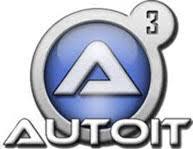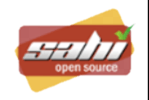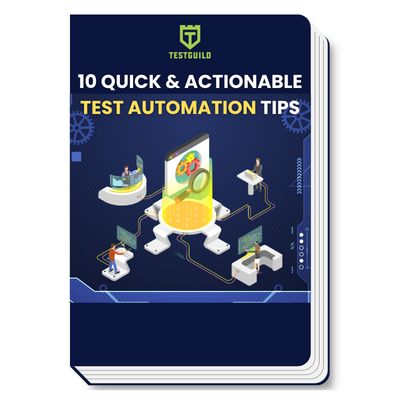Choosing the right automation testing tool in 2025 isn’t easy. Between open-source powerhouses like Playwright and Selenium, codeless AI-driven tools like Testim and Mabl, and enterprise platforms such as UFT One and Tricentis Tosca, the options are overwhelming.
After interviewing over 500+ automation experts on the TestGuild Automation Podcast, I’ve distilled the top tools that real engineers and QA leaders rely on…
This list includes both free and commercial solutions—ranked not by popularity, but by real-world use cases and proven effectiveness.
Elevate your E2E testing skills with AI in 2026
And if you’d like personalized guidance, try our AI-powered Test Tool Matcher to discover the tools best suited for your team’s tech stack and goals.
Find your ideal automation tool in seconds
How to Select Automation Testing Tools
I don’t think there is one tool that all teams should use as their software testing technique. What you decide to choose should be based on your team’s unique needs.
I always recommend, regardless of what automation testing process or tools are selected, to do these:
- A two-week proof of concept (POC)
- Make sure the solution actually fits in with your team's development workflow.
For more details on this and other automation frameworks and best practices, check out my Ultimate Test Automation and Best Practices Guide.
Top Automation Testing Tools Framework List
Now, time for the best automation testing tools list. Bookmark this page, as this list will be updated regularly.
Here is my automation testing tools list of the top frameworks you should check out for GUI testing.
Also there are a lot of tools on this list. Having a hard time figuring out which on is right for you? Check our AI powered Test Tool Matcher software. Find the perfect testing tools for your project with AI-powered recommendations from TestGuild's expert community.
BrowserStack Automate
BrowserStack is an industry-leading cloud testing platform where teams can harness the automation grid for testing on 3000+ mobile devices and desktop browsers. BrowserStack Automate offers over 50 integrations for frameworks, CI/CD tools, project management, test case management, and workflow automation.
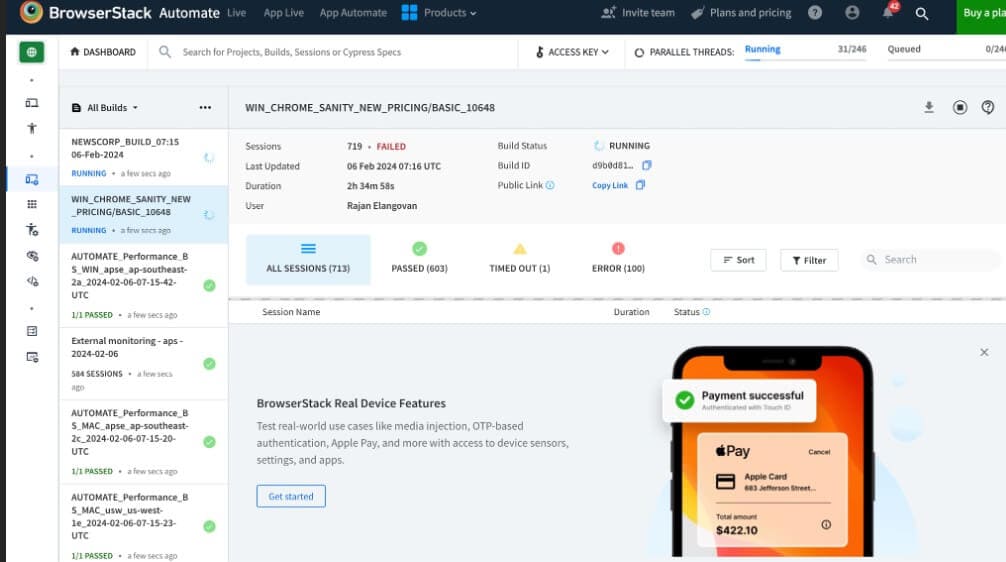
TestResults.io
In the recent podcast with Tobias Müller on “Next Generation Functional Visual Test Automation,” I had the opportunity to delve into the workings of TestResults.io.
This platform, as discussed, pioneers the application of AI in the realm of autonomous software testing, presenting a viable solution for some of the most common challenges faced in test automation. TestResults.io potentially speeds up your testing process threefold. Its primary allure comes from its reliability, emphasizing eliminating the unpredictable elements – or “flakiness” – often associated with automation testing.
Plus, it significantly lessens the maintenance effort, which could alleviate the stress involved in ensuring the continuous operation of your testing.
One significant aspect differentiating TestResults.io from its counterparts is removing the need for XPath, IDs, and other selectors. This implies reducing the technical complexities typically associated with the automation process, making it more approachable and efficient.
The platform is designed with a user-centric philosophy, enabling the automation of entire user journeys. This means you can perform tests across applications, browsers, devices, and platforms, irrespective of their specific technologies. If a user can interact with a system, TestResults.io can automate testing.
TestResults.io includes a low-code and no-code designer in its platform, alongside a management cockpit providing visual and detailed reporting. The aim is to offer a comprehensive test lab that is accessible and informative for users of varying expertise levels.
Finally, one of the critical features of TestResults.io is its ability to integrate with your CI/CD pipeline smoothly while offering a team workflow. This seamless integration could be beneficial in achieving efficient, continuous testing and delivery in software development.
Selenium WebDriver
OK–this is a no-brainer. Selenium is now the leading open-source automated regression testing option for browser-based website automation.
But, Selenium is not a standalone testing tool.
Advantages
- It’s an API that allows you to programmatically write tests using most programming languages to interact with a browser as a real user would.
- This is probably one of the most popular website automation testing tools listed. In fact, you can't start a list of automation tools without having Selenium first.
- It is also the quality software that started the Agile and DevOps automation revolution and is in most demand in SDET job descriptions.
Playwright
Playwright is a robust cross-browser automation library designed for end-to-end testing of modern web applications. Launched as a fork from Puppeteer in 2019, Playwright supports all major rendering engines like Chromium, Webkit, and Firefox, and it's compatible across multiple platforms. It's particularly praised for its ability to emulate native mobile browsers and its comprehensive set of features that prevent flaky tests, such as auto-wait functionality and web-first assertions.
A standout feature of Playwright is its out-of-process operation, which aligns with modern browser architectures, freeing it from the limitations typically associated with in-process test runners. This design allows it to handle scenarios that span multiple tabs, origins, and users, making it highly effective for complex, dynamic web applications 3 . Additionally, Playwright ensures test isolation and fast execution by creating a new browser context for each test, which is akin to a fresh browser profile for every run .
For developers and testers, Playwright offers powerful tooling like code generation through action recording, an inspector for page inspection and selector generation, and a trace viewer to capture all necessary information for investigating test failures. Its support for multiple programming languages, including JavaScript, TypeScript, Python, Java, and C#, enhances its versatility, making it a preferred choice for teams with diverse programming skills.
Cypress.io

Compared to most of the other tools on this list, Cypress is a more developer-centric test automation framework that focuses on making test-driven development (TDD) a reality for developers.
Advantages
- One of its design principles was to be able to package and bundle everything together to make the entire end-to-end testing experience pleasant and simple.
- It has a different architecture than Selenium; while Selenium WebDriver runs remotely outside the browser, Cypress runs inside of it. This approach delivers more consistent results since it can understand everything that happens inside and outside the browser.
- It also gives you native access to every object without requiring you to deal with object serialization or over-the-wire protocols. You’re pulling your application into Cypress. As a result, it can synchronously notify you of every single thing that happens inside the browser so that you have native access to every distributed object model (DOM) element.
- Cypress also makes it easy to drop a debugger into your application, which in turn makes it easier to use the developer tools while you’re developing.
Of all the automation testing tools listed here, Cypress is the one that I hear most developers prefer to use.
Cucumber
Cucumber was not designed to be an automation test tool; it’s a tool that helps convert and removes ambiguity from requirements before your team invests time in writing code.
Advantages
- Once you’ve created test scenarios, you can generate what they can “executable specifications,” using whatever automation library is supported by the programming language you use.
- Although Cucumber’s main benefit is helping communication and collaboration, many teams use it simply as an automated testing tools framework.
If you decide to use Cucumber, I highly recommend reading The Cucumber Book: Behavior-Driven Development for Testers and Developers.
The Guild Wants YOU!
If you've read this far, you know how important it is to stay updated with the latest test automation, tooling, processes, and practices. One of the best ways is to become a TestGuild member. Join now at no cost!
Serenity

If you need an automated test tool Java-based framework that integrates with behavior-driven development (BDD) tools such as Cucumber and JBehave, and lets you keep your test creation at a high level while accommodating lower-level implementation details in your reports, Serenity BDD (formerly Thucydides) might be the tool for you. It's designed to make writing automated acceptance and regression tests easier.
Advantages
- Serenity acts as a wrapper on top of Selenium WebDriver and BDD tools. It makes writing BDD and Selenium tests easier because it abstracts away much of the boilerplate code you sometimes need to write to get started.
- Serenity also offers plenty of built-in functionality. This includes such as handling WebDriver management, managing state between steps, taking screenshots, running tests in parallel, facilitating Jira integration, and more—all without having to write a single line of code.
- Serenity creates highly detailed reports. Out of the box, it creates living documentation you can use not only to view your Selenium BDD test results but also as documentation for your application.
- It also has an extra annotation method called @Step. When used correctly, @Step gives you an extra level of abstraction that makes your tests more reusable and maintainable.
- Serenity takes care of many things you would typically have to code from scratch if you were creating your own BDD framework. It’s one of the better open-source frameworks available, although I might be a bit biased; it’s the tool I use for my day-to-day test automation efforts.
John Ferguson Smart also wrote an excellent book on BDD in Action that includes tips and tricks for using Serenity and other automated testing process tools.
OpenText UFT One
OpenText UFT One is a powerful, AI-driven test automation solution designed for enterprise-grade application testing. This versatile tool supports over 200 technologies, including SAP, Salesforce, Java, and Citrix, enabling true end-to-end testing from UI to API across desktop, web, mobile, mainframe, composite, and packaged applications. UFT One leverages embedded AI capabilities to accelerate functional testing, increase test coverage, and enhance test resiliency. With features like cross-browser support, parallel testing, and seamless integration with DevOps toolchains,
UFT One allows QA teams to efficiently scale tests across distributed infrastructures. Its AI-powered intelligent test automation helps reduce test creation time and maintenance while boosting overall test coverage. UFT One is an essential tool for organizations looking to implement continuous testing in their CI/CD pipelines and achieve automation at scale in their software development lifecycle.
Before Selenium became the de facto browser-based automation solution, QTP/UFT was one of the market's most popular automation testing tools.
Advantages
- It’s still one of the top automation tools for folks who need a tool that automates more than just web browsers.
- It has automated web testing functionality and support for other diverse technologies like WPF, NET, Oracle, PeopleSoft, SAP, Siebel, Terminal Emulators, and more.
- Using a tool like UFT allows you to automate complete end-to-end testing workflows that might interact with non-web-based applications.
TestComplete

SmartBear's TestComplete platform helps you create repeatable and accurate automated assurance tests across multiple devices, platforms, and environments quickly and easily.
The latest version of TestComplete is even better due to its support of Selenium WebDriver and unit testing.
Best of all, you can choose from these scripting languages:
- Codeless drag-and-drop functionality or JavaScript
- Python
- VBScript
- JScript
- DelphiScript
- C++Script
- C#Script
Sikuli
Sikuli is a tool that uses image recognition to automate user interfaces (GUI) by capturing screenshots. What sets Sikuli apart is its ability to interact with any application regardless of its technology or platform, by identifying elements on the screen as they are displayed to the user. This feature proves valuable for testing applications with content or unconventional user interface components that may pose challenges for automation tools.
Scripts for Sikuli are written in Python making it accessible to testers with Python and reducing the learning curve for new users. The tool employs a matching engine to locate screen elements offering a more intuitive approach compared to navigating DOM structures or working with complex element locators.
One practical use of Sikuli is, in testing video games or intricate applications where elements frequently change appearance or position. It also excels in environments where other automation tools struggle to interact with the software being tested, such as machines or remote desktops.
SikuliX can help automate anything you see on the screen of your desktop computer running Windows, Mac, or some Linux/Unix. Additionally, Sikuli uses image recognition powered by OpenCV to identify and control GUI components.
AutoIt
AutoIt v3 is a freeware, BASIC-like scripting language designed for automating the Windows GUI and general scripting.
While not the most robust tool of all the other automated testing tools, many testing teams integrate AutoIt with Selenium to work around non-browser windows that appear in an automated test workflow.
Applitools
While most automated software testing tools on this list were created for functional testing, Applitools was developed from the ground up, specifically for visual validation assurance. Visual Software Testing is the process of validating the visual aspects of an application’s User Interface (UI).
In addition to validating that the UI displays the correct content or test data, Visual Testing focuses on proving the layout and appearance of each visual element of the UI and the UI as a whole.
Watir

Watir is an open-source Ruby library for automating tests.
Watir interacts with a browser the same way people do:
- clicking links
- filling out forms
- validating text.
PowerShell

PowerShell is a Microsoft product. Anytime you want to use the command line or automate anything inside of the Windows ecosystem (or pretty much any Microsoft product), you’ll want to go with PowerShell.
While not usually considered in a list of automated testing tools, I still consider this a viable option for DevOps-based automation. There is even a BDD framework for it called Pester that some teams love.
Tricentis qTest

qTest Scenario is a JIRA plugin that was designed to help you quickly manage your BDD/TDD end-to-end workflows, including creating and executing tests as well as acting as a centralized repository for results, and defects management, and resolution.
They developed the qTest Scenario with some essential team benefits in mind, like:
- Helping your teams work faster
- Increasing productivity and collaboration
- Helping you focus more on your end-users
- Helping you scale your test-first efforts across your organization
Appium
Appium is a free, open-source, cross-platform UI mobile testing tool. It allows you to write UI tests for your mobile apps, Android and iOS, and other OSs. It also lets you create test scripts using the Selenium JSON writer you know and love from web automation assurance.
Appium is becoming an industry standard for mobile testing, much as Selenium WebDriver became the standard for browser-based automation a few years ago.
Robot Framework

You can't go wrong with the Robot Framework if you want to use Python for test automation.
Advantages
- This mature product, created for testers, uses a keyword-driven approach to make tests readable and easy to create.
- It also includes many test libraries and other tools you can use.
- The Robot Framework is Python-based, but you can also use Jython (Java) or IronPython (.NET).
- While the Selenium WebDriver library may be the most used external test library, Robot Framework can test things other than websites, including FTP, MongoDB, Android, and Appium.
- In addition to all this open-source awesomeness, it has a lot of APIs that help make it as extensible as possible.
- The keyword approach used by Robot Framework is excellent for testers who are already familiar with other vendor-based, keyword-driven test tools, making the transition to open source much more comfortable for them.
If your team is mostly made up of testers, Robot Framework is an excellent option for your automation framework.
Broadcom Agile Designer
The Broadcom Agile Requirements Designer automation tool takes a unique approach to software test automation. Rather than focusing on the code, it creates automated tests automatically using model-based requirements. Using a model-based approach to the testing process is cool because it can auto-generate and update test cases whenever a change is made to the model.
GraphWalker
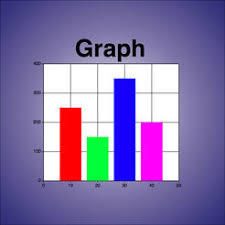
If a model-based approach for test automation sounds like a solution that would work for your team, but you have a tight budget, check out GraphWalker.
GraphWalker is an open-source Model-based automated testing tool for test automation. It's designed to make it easy to design your tests using graphs.
Ranorex

Ranorex test studio is a functional test suite and automation tool that is driven by the user interface. It helps you automate anything when it comes to web applications, mobile applications, or desktop-based applications.
CucumberStudio (Formally HipTest)
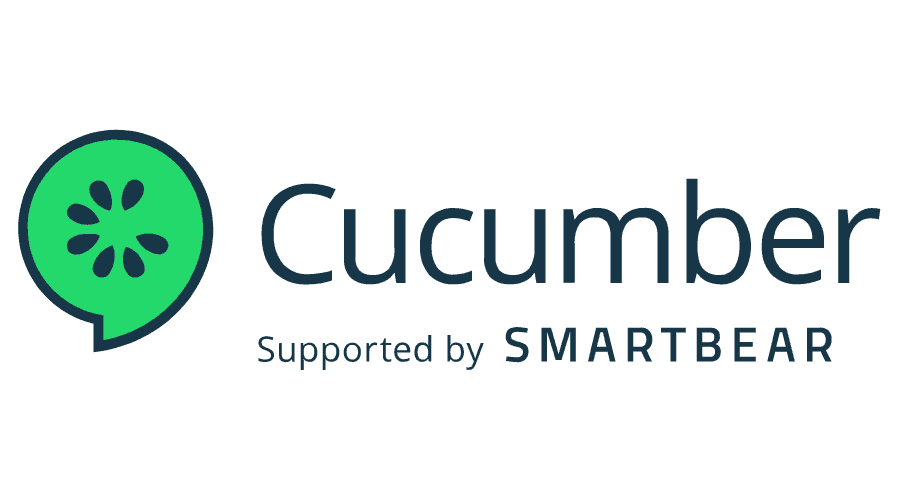
CucumberStudio is a new breed of test management tool and BDD Framework. Many teams that use BDD have a hard time managing all their manual and exploratory testing, and automated tests in one place.
To address this issue, HipTest has developed a single platform to help with those BDD testing efforts. It’s a simple platform in the Cloud that supports real-time collaboration between product owners, testers, and developers.
Learn practical ways to integrate AI into your work
TestPlant
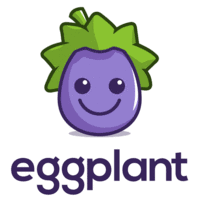
Keysights Eggplant leverages automation and artificial intelligence to streamline testing processes on platforms. It excels in conducting regression testing by automating a portion of tasks reducing workload by, up to 75%. Eggplant utilizes computer vision for testing in environments such as Citrix workspaces simplifying test scenarios and mitigating risks.
One of the features of Eggplant is its capability to conduct tests across 700 combinations of iOS and Android devices without requiring physical device management. This functionality proves beneficial for teams seeking to ensure performance of their applications across a range of devices and operating systems. Moreover Eggplant seamlessly integrates with Git, enabling collaboration, version control and continuous integration. Essential elements, for maintaining efficiency in evolving development settings.
This is one of the only test automation tools on this list that has strong support for Apple’s platform. Because of its unique, image-based recognition abilities, it's known for its ability to test hard-to-automate applications, especially those with object recognition issues.
TestArchitect

TestArchitect is a codeless, keyword-driven automation framework that makes it easy for teams to create and manage large test suites.
When I asked Hung Q. Nguyen, the co-founder of LogiGear, why he created Test Architect, he mentioned that creating a test is one thing. But tests change, and they change very rapidly.
How do you rapidly change the test, maintain, and update it so that you can scale? That was the thinking behind the design of the Test Architect.
Galen Framework

If you need to focus your own automation software testing efforts on user experience design (UX) or layout testing, you can use this tool.
The Galen Framework is a tool, for testing user experience specifically emphasizing how apps display on devices. It operates based on specifications enabling you to create tests using text files that outline the layout and dimensions of user interface elements guaranteeing their appearance across a range of screen sizes and resolutions. This method is ideal for teams that prioritize coherence without delving deeply into visual validation but instead concentrate on precise layout.
Galens capacity to produce reports with screenshots and visual contrasts along with its feature offers a clear graphical depiction of areas that may require attention. This feature makes it an exceptional option, for front end developers and testers who need to ensure that an app not functions effectively but looks appealing on any device.
Advantages
- Created specifically for UX testing acceptance testing, Galen has a special syntax and rules you can use to describe and verify your application’s layout.
- It also lets you specify your browser size and then run tests against your software to check layout specifications.
- Galen tests also generate detailed HTML reports with screenshots, including a visual image comparison with a cool heat map feature.
- You can write tests in a simple text file using the Galen syntax, JavaScript, or Java.
Free Automation Testing Courses
Tricentis Tosca

Tricentis is self-billed as “the continuous testing company.” They have a strong focus on supporting Agile testing and CI processes.
Their solution Tosca boasts a scriptless technology that is used for functional test automation.
Tosca, developed by Tricentis is a test automation tool that stands out for its ability to support an array of applications and technologies. Its key strength lies in its capacity to handle both intricate test automation scenarios making it a versatile option, for businesses. The model based approach of Tosca enables maintenance and scalability of test cases allowing them to adapt to changes in the applications being tested without requiring modifications.
This tool is particularly effective for conducting end to end testing as it seamlessly integrates with enterprise applications such, as SAP, Salesforce and Oracle. Through this integration capability Tosca can effectively manage technologies within a workflow offering a comprehensive testing solution that spans across all layers of an application.
Espresso
Espresso proves to be an asset, for testing Android user interfaces seamlessly integrated within the Android Studio IDE. Its strength lies in its capacity to engage with Android UI elements and automate user interactions efficiently. The speedy and dependable nature of Espresso tests is attributed to their operation with the app ensuring readiness of the UI before action execution. This seamless integration not accelerates test running but bolsters accuracy by enabling direct interaction with the tested application.
Espressos capability to launch activities and manipulate the apps state empowers developers and testers seeking control over testing environments. It is well suited for crafting concise sustainable UI tests that eliminate the need, for setup when testing Android apps.
Testim
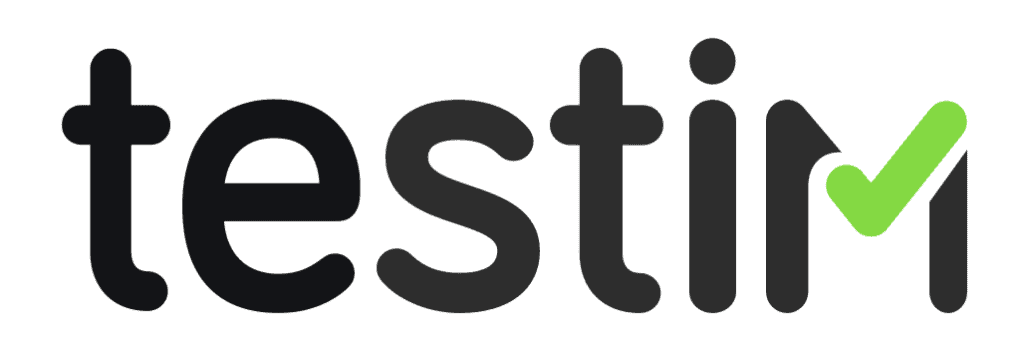
Testim leverages machine learning to speed up the authoring, execution of test coverage, and, most importantly–maintenance of automated tests. Their goal is to help you to start trusting your tests.
Testim focuses on reducing your flaky tests and test maintenance, which they see as one of the most significant challenges for most organizations. Oren Rubin, the co-founder of Testim, mentioned in a recent TestTalks interview that the firm’s primary goal is to help liberate test automation from the exclusive realm of developers and make it simple enough for anyone on the team to create.
WebDriver.IO
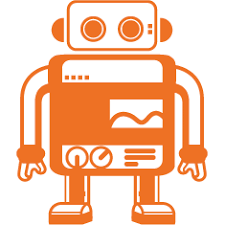
WebDriver.IO is another cross-browser testing automation testing tools module. Still, this one is for Node.JS, which makes it possible to write super easy Selenium tests in your favorite BDD/TDD test framework that will either run locally or in the Cloud using Sauce Labs, BrowserStack, or TestingBot.
I like how Kevin Lamping in TestTalks Episode 179 describes the chief benefit of using WebDriverIO as being like the SeleniumJS binding on steroids!
WebDriverIO is agnostic about the test framework you use so that you can leverage tools like Cucumber, Jasmine, and Mocha+Chai. If you’re a QA engineer who’s just getting started, WebDriver.IO might be the way to go because–in my opinion–JavaScript with WebDriverIO is a lot easier to pick up than Java.
Mabl
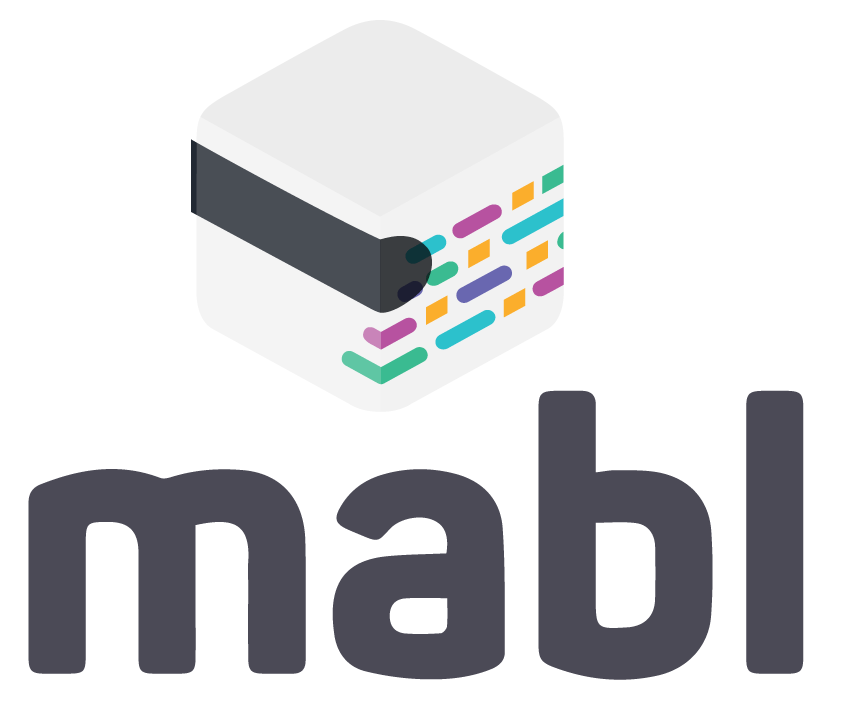
Mabl is one of the newer automation testing tools on the market that focuses on the hot trend of using AI and machine learning to help folks with their testing efforts.
In a nutshell, to get started, you merely point Mabl to your application.
- It will then crawl your app’s screens and begin to run default tests that are common for most applications.
- Along the way, it also uses machine learning algorithms to improve test execution and defect detection.
- Using the Mabl trainer chrome extension, you can also train Mabl to learning journeys in your application which describe the functionality Mabl will test.
Jest

There are tons of JavaScript test automation frameworks out there that you might choose from, but Jest seems to be the most developer-friendly
It’s used by Facebook to test all JavaScript code, including React applications. It also is advertised as having zero-configuration setup time, so it’s easy to get started with.
Katalon Studio

Katalon Studio is an open-source solution, a paid vendor tool that has functionality like Record and Playback, reporting, Object Spy, Object Map, and more. You can use it to create automated tests for Web, API, and mobile apps. It even runs on both Windows and Mac.
Progress (Telerik)

For those of you who may not be familiar with Test Studio, it is a visual .NET-based end-to-end automation tool backed by Progress Telerik, which is the home of the favorite free debugging tool Fiddler.
Test Studio supports functional UI, load/performance, and RESTful API testing and is a good fit for both the less experienced QAs as well as savvier software engineers in the test.
I also know a few automation test engineers who use Progress’s Test Studio as a front end for their Selenium test automation efforts. Strengths of Progress' Test Studio is its hybrid technology to locate elements based on a combination of object ID and image (making the tests a lot more stable) as well as integration with Visual Studio and its supported languages.
Sahi
Developed for testing web applications, Sahi offers both an open-source and a pro version.
Advantages
- It works as a proxy server you can use within a browser. You can launch the browser you want to test from the Sahi dashboard.
- The Sahi controller guides you through the recording and capturing of the interaction you want to perform against the application. When you hover over any element in the Sahi browser, it shows you all of the actions you can perform against that element.
- You can also use the controller to play back your script.
- Sahi’s Record and Playback functionality makes it easy to get started with test automation.
Gauge

Gauge is an open-source test automation tools for Mac, Windows, and Linux. The folks at ThoughtWorks developed it–the same company that created Selenium.
Practitioners of TDD and BDD will appreciate Gauge’s focus on creating living and executable documentation.
Gauge automation tests, called “specs,” are written in a simple markdown language syntax using Java, Ruby, and C# within developer IDEs such as Eclipse and Visual Studio. You can also extend Gauge’s functionality with its support for plugins.
The 2017 Online Automation Guild conference had an awesome hands-on session on cross-browser testing with Gauge and Selenium WebDriver which you can still get recordings for.
RedwoodHQ

RedwoodHQ takes a slightly different approach than the other testing tools on this list.
Advantages
- It creates a website interface that lets multiple testers work together and run tests from one Web-accessible location.
- You can write tests in Java/Groovy, Python, and C# to test Web applications with Selenium, APIs, or databases using their web IDE, which also includes built-in Git integration.
- You can leverage RedwoodHQ’s existing action keywords to start creating and modifying tests quickly.
- To create a test script, simply find the action you want to perform, drag it into your test case, and enter the parameter values it expects.
- The built-in IDE lets you create and modify test cases and actions as well as execute tests. You can also run your tests against predefined machines in parallel and see a running history of all your previous test runs.
- RedwoodHQ is tester friendly and has many built-in features you can use to create complete test automation and test management solutions for your teams.
Get TestGuild Partnership Plans
Oracle Application Testing Suite (OATS)
Does your team do a lot of Oracle-based software development? Need a tool to help test your regression and performance test your Oracle applications or databases?
Oracle Web Application Testing suite contains a bunch of integrated products to help with Oracle Functional Testing for regression testing of web applications and Oracle Load Testing for performance testing of your Oracle packaged solutions.
TestCafe
TestCafe is a tool built on node.js that simplifies web testing. A standout feature is its ability to run directly in the browser through a server that handles your commands. This setup smoothly manages both client side and server side testing, which's beneficial, for modern web applications relying heavily on these technologies.
An important advantage of TestCafe is its independence from WebDriver or other testing tools. This streamlines the setup process reducing the complexity and instability often associated with WebDriver based tools. Moreover TestCafe supports all browsers without needing plugins making it versatile for diverse testing scenarios.
For users working with React, Vue or Angular frameworks TestCafe offers built selector extensions that simplify interaction with these frameworks. This feature is especially valuable for developers and testers aiming to ensure functionality across frameworks and devices.
In addition TestCafe supports Behavior Driven Development (BDD) enabling the creation of tests that're more readable and maintainable. This capability is beneficial, for teams seeking to incorporate this methodology into their testing workflows.
For a full review, check my article on out What is TestCafe
40. accelQ
accelQ is an Agile testing platform for Functional & API Test automation web and mobile applications. Automate 3x faster with autonomics-powered codeless natural language automation.
Guileet Nagpaul from accelQ mentioned that when selecting a test tool that having a solution that can handle your web testing all the way to your file interactions, to your APIs, to your database, all in a simple flow without having to hire an army of developers to accomplish that is critical.
Bellatrix
Anton Angelov created Bellatrix from Automation. The Planet is a cross-platform, easily customizable, and extendable .NET test automation framework that helps increase your tests' reliability.
It is free but not open source because Anton wanted to keep it high quality. Hear more here:
OpenTest
OpenTest is a free and open-source functional testing tool for web applications, mobile apps, and APIs, built for scalability and extensibility, with a focus on mainstream test automation practices.
OpenTest is a feature-reach tool that requires little to no coding skills and can handle virtually any type of functional test automation project.
Oxygen
The creators of Oxygen felt there must be a better way to create a framework that, on one side, is simple enough for someone from a non-programmer background yet powerful enough for more advanced testers.
So Oxygen was created to help both inexperienced and SDET‘s write more advanced tests that cover not just UI but things like API testing, database testing, and IoT testing as well.
Boozang
Boozang is a codeless solution that allows you to quickly and easily build end-to-end workflow tests using only your web browser.
LeapWork
A growing trend in automation is RPA. One of the easiest tools to use in this area is Leapwork which requires no coding to create fairly complex automated processes that include test automation flows.
GameDriver.io
GameDriver is a framework that provides developers with an API agent that they can embed into their games so that when the developers are creating the build, they embed the driver game object within their game.
If you need to test Unity games, you need to check this out.
SeleniumBase
SeleniumBase is an all-in-one framework for reliable browser automation, end-to-end testing, reports, charts, presentations, website tours, and visual testing. Tests are run with pytest. WebDriver controls browsers.
So it is a Python framework, for automating tests that combines Pytests testing functions with Selenium WebDrivers web browser automation capabilities. This combination improves the dependability and effectiveness of web automation by making sure that actions such as clicking buttons and entering text happen when web elements are completely ready and responsive thanks to SeleniumBases waiting features. It aims to make test creation and upkeep easier making it an excellent option, for individuals seeking to simplify their testing workflows using Python.
EndTest
EndTest is an affordable codeless automated testing solution. It is aimed at teams that want to build tests faster without writing any code.
52. Appsurify

Appsurify is an AI-based automated testing solution that helps you find the right subset of your automated tests to match the specific code changes, making your testing run 10x faster.
TestBrain also quarantines flaky failures so they don’t break your builds. It identifies the risks in recent commits to prioritizing your manual testing so you can release faster with fewer bugs.
Smashtest
Smashtest is an open-source tool and language for rapidly describing and deploying test cases. It also allows you to significantly speed up your automated testing by writing tests in a tree-like format.
Selenide
Selenide looks like a complete automation test tool framework. If you are using Java and need to create some automation, you definitely should give it a try since it takes care of many of the common complexities and issues testers run into using just Selenium.
Perforce BlazeMeter
BlazeMeter by Perforce is a continuous testing platform that empowers DevOps teams to automate performance testing, API testing/monitoring, functional testing, and service virtualization. The platform utilizes AI-powered test data generation to simulate realistic user behavior so teams can validate applications under peak loads and ensure scalability.
BlazeMeter seamlessly integrates with open-source tools like Apache JMeter, Selenium, and Gatling to allow teams to shift-left testing in CI/CD pipelines. Its cloud-native architecture supports distributed testing across 50+ global data centers, with real-time dashboards tracking compliance (SOC2, GDPR, HIPAA), errors, and response times.
Ideal for: Teams prioritizing scalable load testing with open-source flexibility.
Perforce Perfecto
Perfecto by Perforce is a cloud testing platform specializing in web, mobile, and accessibility testing on 2,000+ real devices (iOS, Android, Windows). Its AI Validation technology automatically prioritizes defects and accelerates root-cause analysis.
Perfecto offers Codeless Automation for test creation without scripting and ensures accessibility testing compliance with WCAG/ADA standards via real-device validation (no emulators). Integrations with Selenium, Appium, and Jira streamline DevOps workflows, while parallel testing in a distributed cloud reduces execution time.
Ideal for: Enterprises requiring accurate cross-device testing and AI-driven defect resolution.
What About Non-functional Automation Testing Tools?
For other non-functional automation testing tools to compare and check out:
- 15 Open Source API Testing Tools for REST & SOAP Services
- Top 11 Open Source Performance Testing Tools for Load & Stress Testing
- The Top 21 FREE Visual Validation Tools for Testers
- Top Accessibility Testing Tools for Automation
- 7 Innovative AI Test Automation Tools for the Future: The Third Wave
- 7 iOS Testing Tools You Need to Know
- Top Mainframe Automation Testing Tools
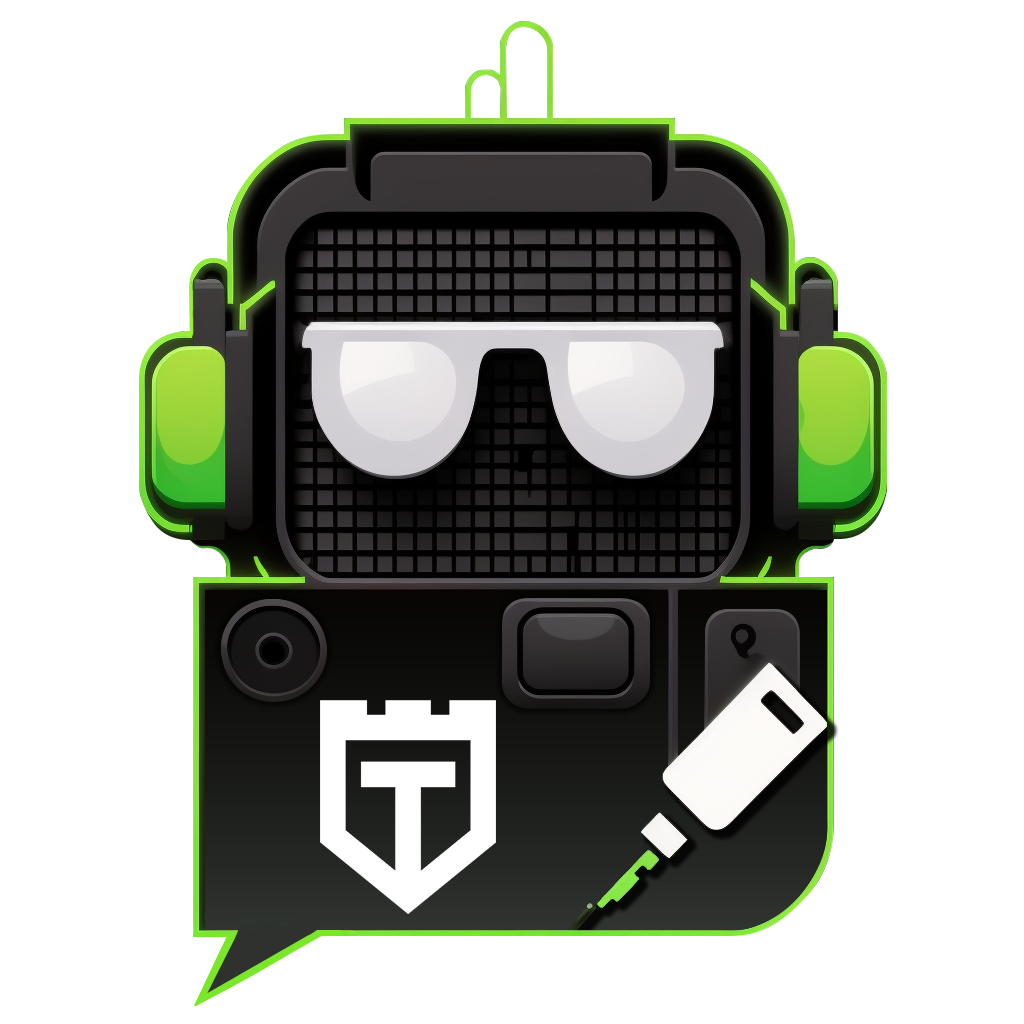
How to Stay Up To Speed with the Latest in Automation Testing?
If you feel overwhelmed with staying up-to-date with all the latest automation testing tools and best practices, check out my annual online conference dedicated 100% to automation testing — Automation Guild.





